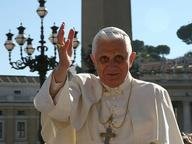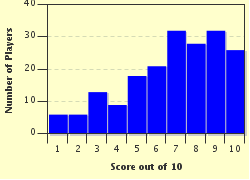Quiz Answer Key and Fun Facts
1. Pope Linus, who was the second head of the church, issued which adornment decree about women?
2. The eighth pope, Telesphorus, was head of the church in a period when most of the liturgy of the holy Mass was already established. However, he did instigate several other traditions of the church. One of these was related to Christmas. What was it?
3. Pope Soter declared that for a marriage to be declared valid, what event had to take place first?
4. What was notable about the papacy of the fourteenth pope, Victor I?
5. During the reign of the 21st pope, we are lucky to have some first hand evidence, in the form of a letter written by him, about church numbers in Rome at that time. Who was this statistically minded - and extremely reluctant - leader of the church?
6. The church suffered persecution for several centuries in its early days. What official ruling by the Roman emperor Gallienus saw a temporary end to this in the papacy of Pope Dionysius?
7. During the papacy of Pope Caius, he established steps and positions through which aspirants to the rank of bishop first had to pass. These were porter, lector, exorcist, acolyte, sub-deacon, deacon and - what else?
8. Perhaps the most interesting event associated with the thirty-fifth pope, Julius I, was the date he set to mark an important Christian celebration. Celebrated ever since on this date, which event is it?
9. Pope Damasus I headed the papacy at perhaps its most important time in history. This was during the reign of Emperor Theodosius. Constantine had legitimised Christianity earlier in the century, but it was Theodosius who issued another vastly important edict regarding the church in 380. What was this?
10. Pope Anastasius I, the last pope of the 4th century, was followed to the papacy by the fortieth pope, Innocent I. The two were related. In what way?
Source: Author
Creedy
This quiz was reviewed by FunTrivia editor
CellarDoor before going online.
Any errors found in FunTrivia content are routinely corrected through our feedback system.


